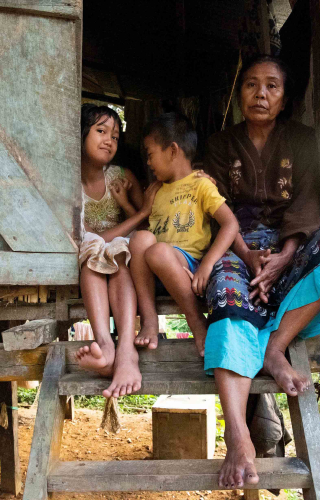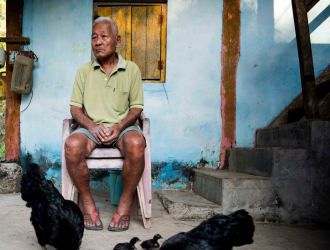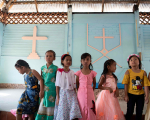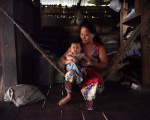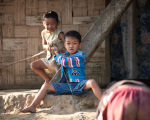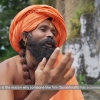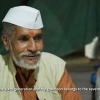The Andaman and Nicobar Islands comprise 572 islands (of which 37 are inhabited) at the juncture of the Bay of Bengal and Andaman Sea. For thousands of years, these islands were home to hunter–gatherer groups, notably the Jarawa, the Onge, the Great Andamanese and the Sentinelese in the Andaman archipelago and the Nicobarese and the Shompen in the Nicobar archipelago. The remote location of the islands meant they were never colonised (in the eleventh century, the Chola kings had used the islands as a base to reach Indonesia). This was to change in the eighteenth century, when the Danes and the British arrived on the islands.
The British built a naval base and a penal colony, with a capital, Port Blair, along a natural harbour on South Andaman Island. The harsh conditions at the penal colony led to the islands’ notoriety as Kaalapani (black water) in India. The pristine tropical evergreen forests on the islands were extensively logged under the British administration and timber workers from different parts of India were brought and settled on the islands. Elephants were brought from the mainland to assist in logging.
In 1924, the British announced a new scheme inviting people to settle on the islands with the incentive to clear forests, work in timber factories or cultivate agricultural lands. Coincidently, Dr H.I. Marshall, principal of the Karen Baptist Theological Seminary based in Rangoon, was returning to Burma (now Myanmar) from the USA. He stopped at the capital, Port Blair, to meet his cousin, Lieutanant-Colonel Michael Llyod Ferrar, Chief Commissioner of the Andaman and Nicobar Islands at that time, who informed him of the scheme. On arrival in Burma, Dr Marshall promptly published an advertisement to this effect in a local newspaper. Reverend Lugyi, a Karen Christian pastor, saw a great opportunity for the Karen community and, under his guidance, about 13 families landed in Mayabunder in Middle Andaman Island in 1925, followed by another batch of 50 families the next year. The Karens were given free rations for one year and forest land for settlement and cultivation.
In Mayabunder, the Karen community founded Webi village or ‘hidden village’. I had visited Webi in June 2018 and stayed there for four days. While planning a second trip, I heard of Saw John Aung Thong who had opened his home for tourists. I contacted Saw John and made plans to visit in February 2019, this time with my camera.
I set off from Port Blair on a government ferry. Though scenic, the journey via sea is slow and it took me 13 hours to reach Mayabunder. Saw John was waiting at the jetty to receive me. We covered the 10 km distance from Mayabunder jetty to Webi village in John’s car, winding our way through agricultural fields and landscape dotted with churches, schools and wooden homes. Soon we arrived at John’s homestay ‘Koh Hee’, which John told me, means ‘Island Home’.
During my two-week stay, Isaac Mountain, an expert bird-watching guide, helped me in my interactions with the Karen. There are around 2000 Karen in Mayabunder, scattered over nine villages. Increasing contact with other communities in the Andamans means the Karen no longer enforce endogamy. Many have married outside the community, with their neighbouring settlers, like the Ranchi (who, as the name suggests, migrated from Ranchi in Jharkhand state). The third or fourth generation of Karens speak both English and Hindi apart from the Karen language that is spoken at home and taught till Class 3 in the local Webi Government School. Except for a handful, most of them have never visited Myanmar. Christianity is another binding force for the Karens of Mayabunder.
The Karens love the outdoor life and have traditionally lived off the land, sustaining through farming, animal husbandry, hunting and fishing. These practices continue, with some new initiatives to tap into the tourism potential of the region. Along with his homestay, Saw John has founded a crafts centre called Andaman Karen Crafts (AKC). At AKC, Karen women weave sling bags and traditional Karen dresses on the first floor, and John is busy overlooking the construction of a restaurant on the ground floor. “Tourism can help us preserve our culture. When we can earn a livelihood by showing people our handicrafts and making them taste our food, we will not have to go out in search of jobs,” says Naw Roselyn, John’s sister-in-law and a founding member of AKC. Isaac agrees, “We Karens like a life of adventure. Sometimes we fish, sometimes we swim. Tourism is good for us. We will not enjoy boring work.”
While tourism can be beneficial, it can also affect both the environment and Karen traditions. Isaac tells me, “We are lucky. All who have come, respect our culture. However, we are polluting and littering our land. If this continues for five or seven years, Webi will look different. We should start taking action now.” Isaac has received a fellowship that will help fund his idea of educating the community about plastic pollution and the resulting environmental damage.
The story of the Karens of Mayabunder is similar to many other settler communities in the Andaman and Nicobar Islands—living in an environment that is under threat due to growing human population, unrestricted tourism, climate change, destruction of mangroves, sand mining and deforestation. The Nicobar Islands faced devastation during the 2004 Indian Ocean tsunami and so did the Andamans, a memory still fresh in the minds of the Karens. The Karen people, who are deeply attached to nature, are aware of the threats to their fragile ecosystem. Like John’s homestay, ‘Koh Hee’, they realise the Andamans are their Island Home and they must protect it before it is too late.
Bibliography
Maiti, Dr. Sameera. 'The Karen – A Lesser Known Community of the Andaman Islands.' (Paper presented at the International conference 'Islands of the World VIII International Conference: Changing Islands – Changing Worlds', Kinmen Island (Quemoy), Taiwan, November 1–7, 2004).
Mittal, Tanvi. 'The Karen of Andaman Islands: Labor Migration, Indian Citizenship and Development of a Unique Cultural Identity.' Thesis, Department of Anthropology, University of Pennsylvania, 2015.
